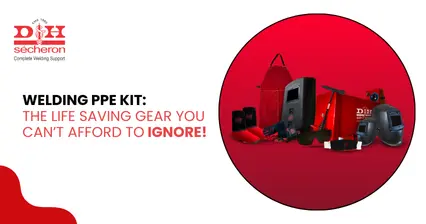Differentiating Between Low-Alloy Steel and High-Alloy Steel
Introduction
Within the expansive realm of metallurgy, steel emerges as a versatile material, boasting various iterations. Among these, the distinctions between low alloy steel and high-alloy steel are noteworthy, given their distinct properties and applications. This blog aims to elucidate the disparities between these two steel types and provide insights into their respective variations.
I. What is Low Alloy Steel?
Low alloy steel is characterized by a modest presence of alloying elements. Typically, this variant contains less than 5% of alloying elements in its composition. Nickel, chromium, and molybdenum are common additions, enhancing the steel’s strength, hardness, and resistance to wear and corrosion.
A prevalent subtype of low alloy steel is low carbon steel, featuring minimal carbon content, usually below 0.3%. This imparts high ductility and toughness to the steel, making it well-suited for applications demanding a delicate balance of strength and flexibility.
II. What is High-Alloy Steel?
In contrast, high-alloy steel boasts a substantial concentration of alloying elements, exceeding 5% in its composition. This elevated content imparts superior mechanical properties and corrosion resistance compared to its low-alloy counterpart.
A prominent example of high-alloy steel is stainless steel, characterized by a high chromium content, typically surpassing 10.5%. This chromium content forms a protective oxide layer on the steel’s surface, bestowing excellent corrosion resistance. Stainless steel finds applications requiring durability and resilience in harsh environments.
III. Applications of Low Alloy Steel and High-Alloy Steel
Both low-alloy steel and high-alloy steel find application across diverse sectors owing to their distinctive attributes:
Construction Industry
Valued for its strength and toughness, low alloy steel is prevalent in construction, automotive, and pipeline applications. It finds use in the construction of structures, car bodies, ship hulls, and oil and gas pipelines. In the construction industry, low alloy steel is used in the fabrication of high-rise buildings, bridges, and other structures where strength and durability are paramount.
Automotive Industry
Welding consumables play a crucial role in welding vehicle parts, including frames and body panels, ensuring the safety and reliability of automobiles. In the automotive industry, low alloy steel is used in the manufacture of various vehicle components, including engine parts, chassis, and body panels. Its strength and toughness make it an ideal material for applications that require resistance to wear and tear.
Oil and Gas Industry
In the oil and gas sector, welding consumables are integral for welding pipelines and infrastructure, ensuring the safe and efficient transportation of oil and gas. Low alloy steel is used in the oil and gas industry for the construction of pipelines and other infrastructure. Its corrosion resistance and toughness make it suitable for applications that require resistance to harsh environmental conditions.
Conclusion
Comprehending the distinctions between low-alloy steel and high-alloy steel proves essential for those engaged in material selection for engineering and manufacturing endeavors. By delving into the properties and applications of these materials, informed decisions can be made, aligning the material choice with the specific demands of an application. Whether employing a stainless steel electrode or a low alloy material, a nuanced understanding of material roles enhances material selection proficiency.
15 May 2025 | Welding
An In-Depth Exploration of Low-Alloy Steel: Your Comprehensive Guide
15 May 2025 | Welding
Nagpur - Bori - Tuljapur Road MSH-3 in Yavatmal District (Maharashtra)
15 May 2025 | Welding
Guidelines to Understand Gas Welding: Applications, Advantages & Disadvantages
15 May 2025 | Welding
3 Tips for Finding the Best Mild Steel Electrode for Your Application
15 May 2025 | Welding
How to Select the Right Welding Filler Wires for Stainless Steel Welding?
15 May 2025 | Welding
Building the Narendra Modi Stadium with Norma V and Autotherme-1 Electrodes
15 May 2025 | Welding
Low Alloy Steel Welding in a (PEB) Pre Engineered Building Structure
15 May 2025 | Welding
Welding Rods: Different Types and Tips for Properly Storing and Handling
15 May 2025 | Welding
Tips for Flawless Welds with Stainless Steel Electrodes: Pros and Cons
15 May 2025 | Welding
Exploring Applications and Benefits of Stainless Steel Welding Electrodes
15 May 2025 | Welding
Welding Basics: Joining Metals with Heat and Pressure - A Beginners Guide
15 May 2025 | Welding
Hard Facing Wire - Understanding the Process and Achieving Optimal Result
15 May 2025 | Welding
Exploring the Advantages of Stainless Steel Electrodes in Welding Applications
15 May 2025 | Welding
Weathering Steel vs. Traditional Steel: A Comparative Analysis of Performance
15 May 2025 | Welding
Choosing the Right Welding Rod: Why 6013 Electrodes Might Be Your Ideal Option
15 May 2025 | Welding
Why 7018 Electrodes Are Preferred for High-Strength Welds in Pipeline Construction
15 May 2025 | Welding
Filler Wire vs. Stainless Steel Filler Wire: Understanding the Key Differences
15 May 2025 | Welding
Exploring the Impact of Filler Material on Welding Quality and Durability
15 May 2025 | Welding
Choosing the Right Cast Iron Electrode for Different Welding Projects
15 May 2025 | Welding
Top Advantages of Cast Iron Electrodes for Industrial Welding Applications
15 May 2025 | Welding
Key Benefits and Challenges of Using TIG Welding in Industrial Projects
15 May 2025 | Welding
5 Reasons Why 7018 Electrode is the Gold Standard for Welding Professionals
15 May 2025 | Welding
Top 5 Advantages of Flux Cored Arc Welding for Heavy-Duty Applications.png)
15 May 2025 | Welding
Lotherme-601: A Game-Changer for Restoring Shoulder Pins in Heavy Machinery
15 May 2025 | Welding
How D&H Sécheron Helped Repair a Rotary Kiln’s Cooler Section with LoTherme 352
15 May 2025 | Welding
Piston Repair for Mining Industry: Cost-Effective Solutions with LoTherme 468.webp)






.jpg)








































.jpg)
.jpg)

.jpg)

.jpg)





.jpg)
.jpg)
.jpg)



.webp)
.jpg)
.jpg)
.webp)
.jpg)






















.png)



.webp)

.webp)
.webp)



